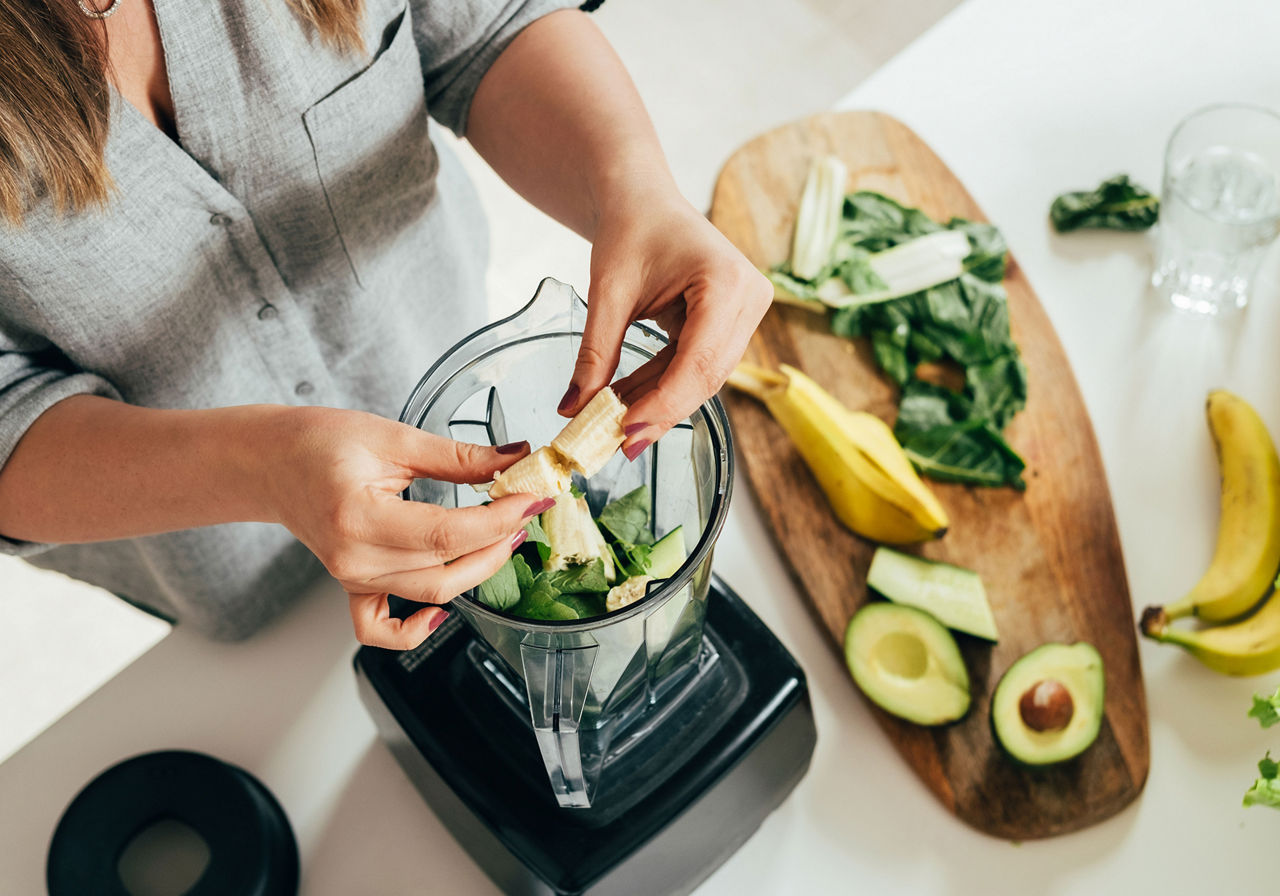
Weight Management
Five Ways to Fill Up without Overeating
Susan Bowerman, M.S., R.D., CSSD, CSOWM, FAND – Sr. Director, Worldwide Nutrition Education and Training 19 October 2023
It’s nice to feel full and satisfied at the end of a meal – especially if you can do it without overeating. But as the days shorten and the nights become longer, many of us instinctively look for hearty, comforting and satisfying foods. We’ve put together a list of five foods to help you get through the winter months without going off track.
What Makes Foods Satisfying?
There are a few reasons why some foods are more satisfying than others. Foods that provide protein can help to fill you up because protein takes longer to digest than fats or carbohydrates.1 This is what gives protein its staying power.
Did you know that a small amount of unsaturated fat in a meal can help to feel satisfied? That’s because fat slows the rate at which your stomach empties. High-fibre foods can also help to fill you up in a couple of ways. One type of fibre adds volume to foods without adding calories.2 The second type slows the rate at which your stomach empties, which can help you to feel fuller for longer.3
Foods that are rich in water or contain lots of air can also help to feel satisfied.4 This is because they add volume (without adding a single calorie). Most of us tend to determine our own personal fullness from a set volume of food, that doesn’t really vary that much from meal to meal.5 If a food gets some of its volume from fibre, air or water it will take up space in your stomach and help contribute to feeling satisfied.
Eggs
These are super-versatile and work well as delicious main dishes and/or snacks. Protein is more filling than fat or carbohydrate and a single egg provides almost seven grams of protein for less than 70 calories.1 If you want a white omelette, each egg white gives you about three grams of protein for every 20 calories.6
Make it even more satisfying: Add vegetables. Their water and fibre content will help fill you up. Make a filling snack by adding vegetables to an omelette or slicing a hard-boiled egg onto fresh tomato slices.
Oat
Oats are a rich source of soluble fibre.6 Soluble fibre can make food more filling and even slow digestion time because it swells up and thickens when it comes into contact with liquid.3
Make it even more satisfying: Add protein and/or a healthy fat (such as almond butter). Try cooking rolled oats in milk or soya milk. Once it’s done, take off the heat and stir in some protein powder.
Bean Soup
Beans are an excellent source of water-soluble fibre and have the added advantage of containing protein. A bowl of black bean soup can provide 15 grams of healthy plant protein.6
Make it even more satisfying: Have a mixed vegetable salad with a drizzle of olive oil on the side. The fibre in the mixed salad and the unsaturated fat from the olive oil will complement the staying power of the soup’s protein and soluble fibre content.
Raspberry Protein Shake
A protein shake made with protein powder, milk or soya milk and raspberries can fill you up because it contains protein and fibre.3
Make it even more satisfying: Add ice cubes to your shake and blend for couple of minutes for a thicker and even creamier tasting shake.
Non-fat Greek-style Yoghurt
Greek-style yoghurt can have twice as much protein as traditional yoghurt. A single-serve container contains 15 grams of protein and less than 100 calories. Say no to pre-sweetened yoghurts and add your own sweetener – you’ll probably add much less sugar than the manufacturer does! Yoghurt is great to have on its own, but it’s fantastic when added to soups and smoothies for a creamier texture and added protein boost.6
Make it even more satisfying: Top yoghurt with high-fibre berries. Go savoury and mix plain Greek-style yoghurt with chopped cucumber, carrot, red bell peppers and sprinkle salt and black pepper.
1Dhillon, et al. (2016). J Acad Nutr Diet, 116(6):968-83
2Thomas, Erdman, & Burke (2016). J Acad Nutr Diet, 116(3), 501-528.
3Soliman (2019). Nutrients, 11(5)
4Goetze et al. (2007). Am. J. Physiol. Gastrointest. Liver Physiol. 292(1), G11-G17.
5Fiszman et al. (2014). Food Res Int, 62, 551-560.
6USDA, FoodData Central
Trending Articles





